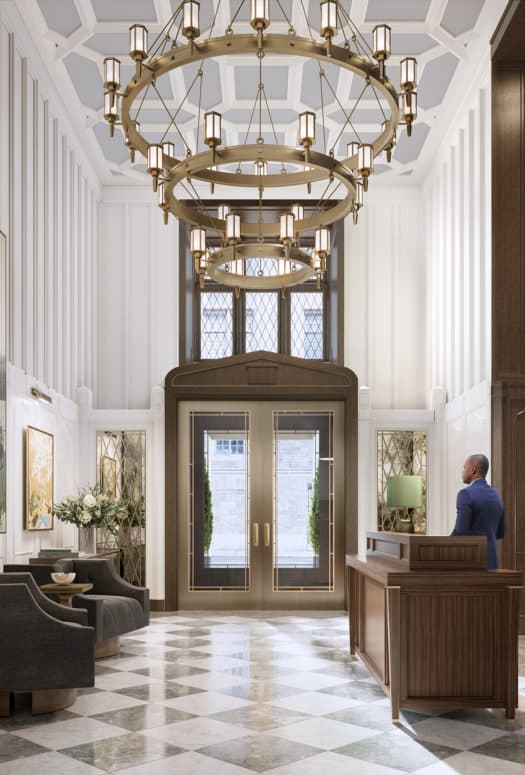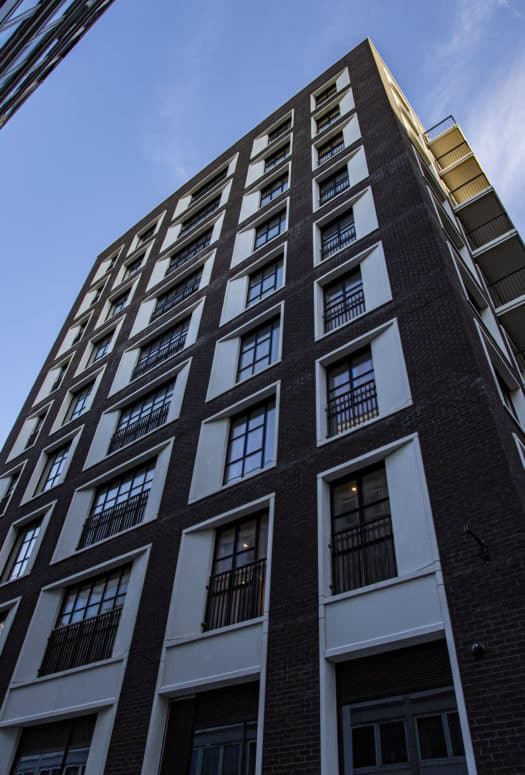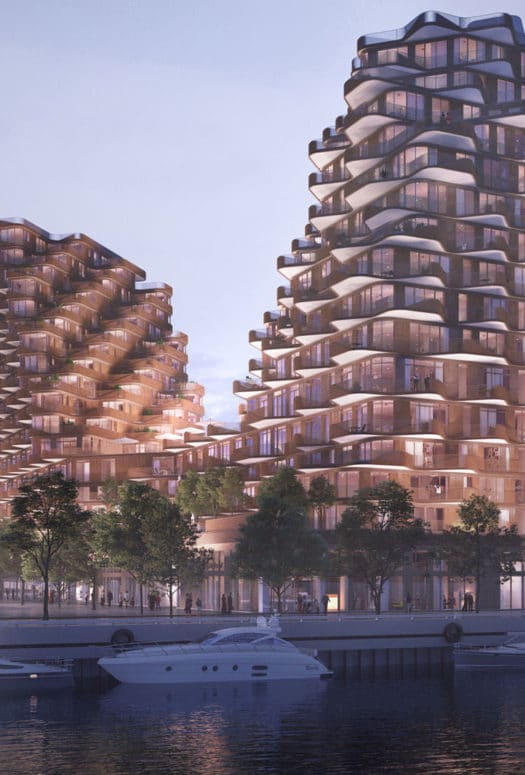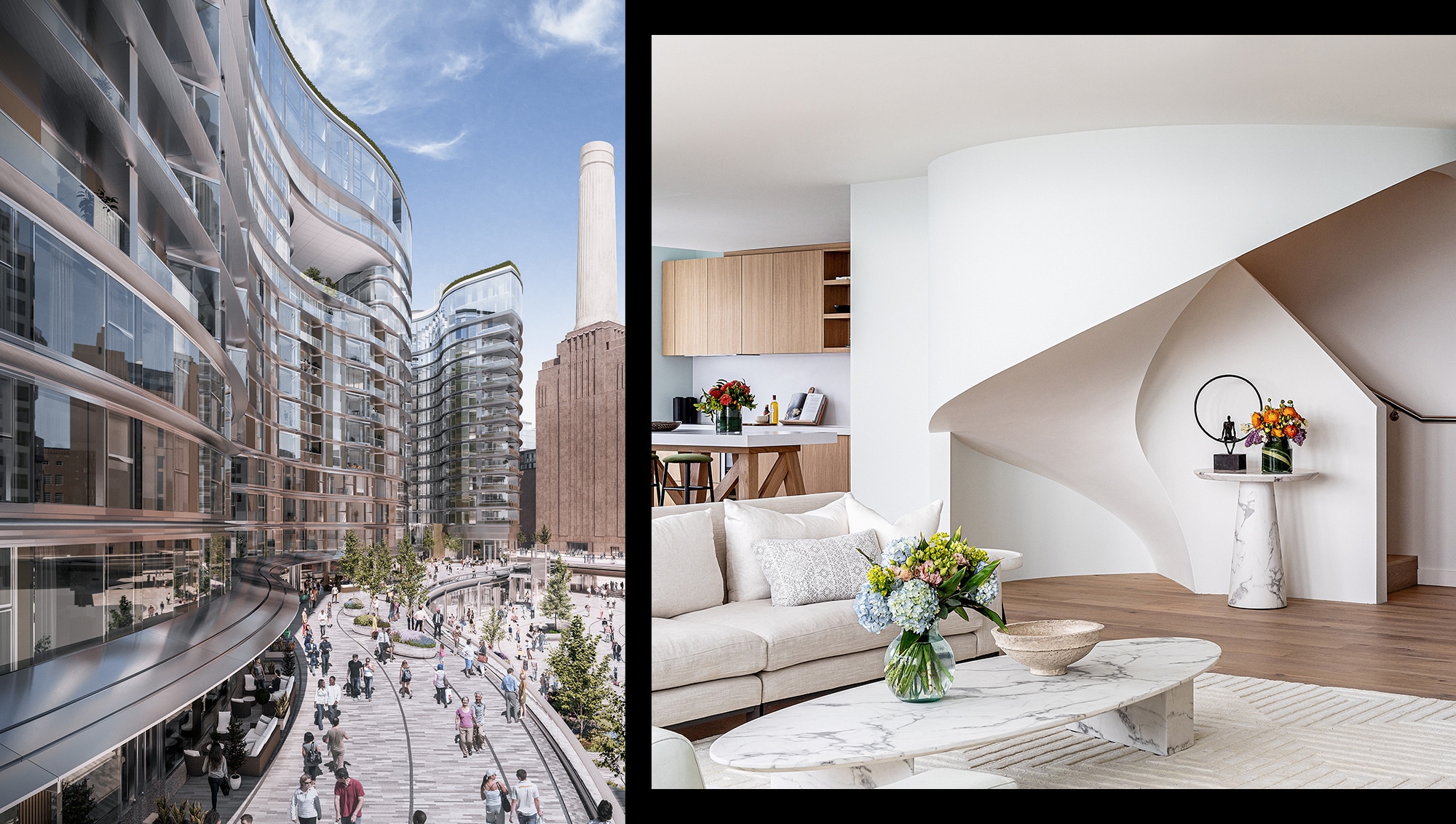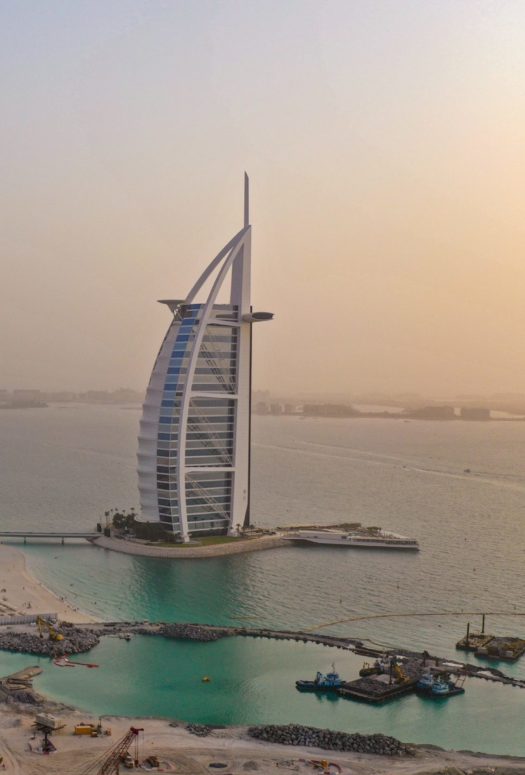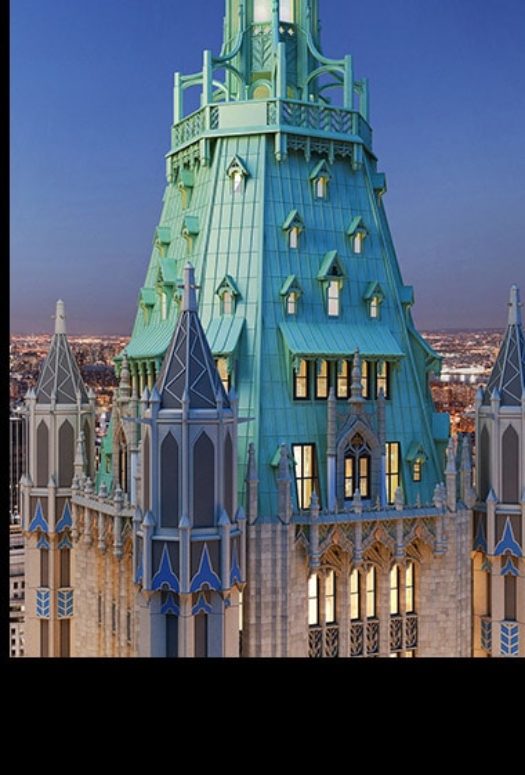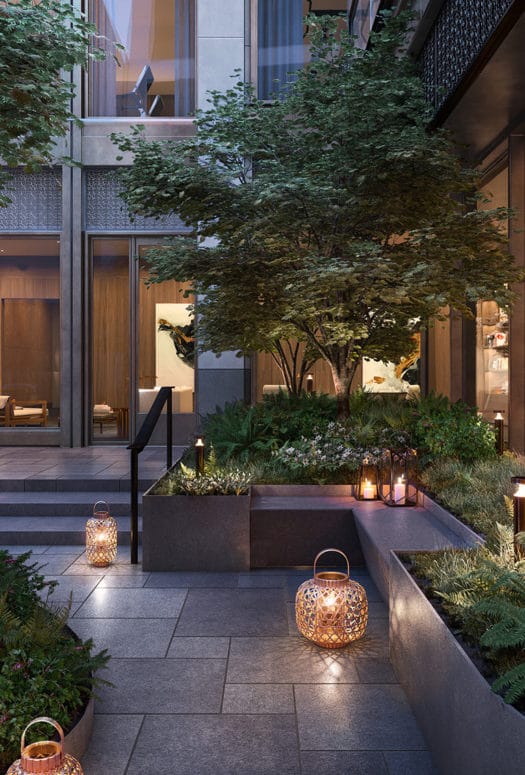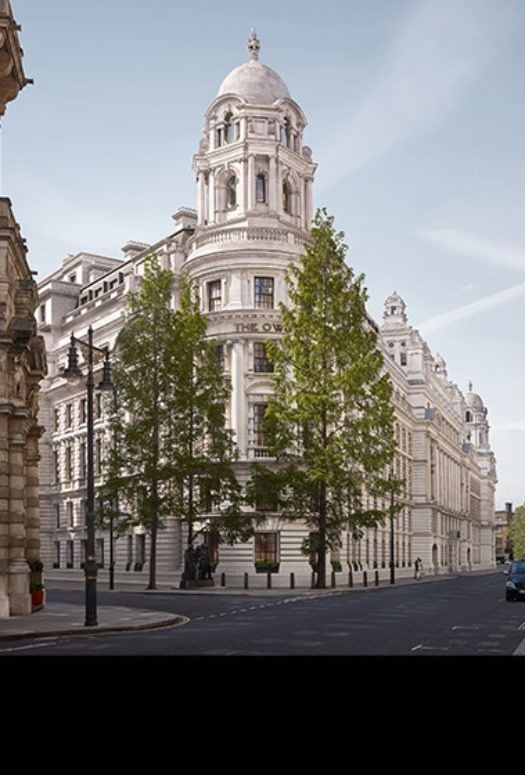Frank Gehry: Three Residential Masterpieces
By: Will Noble
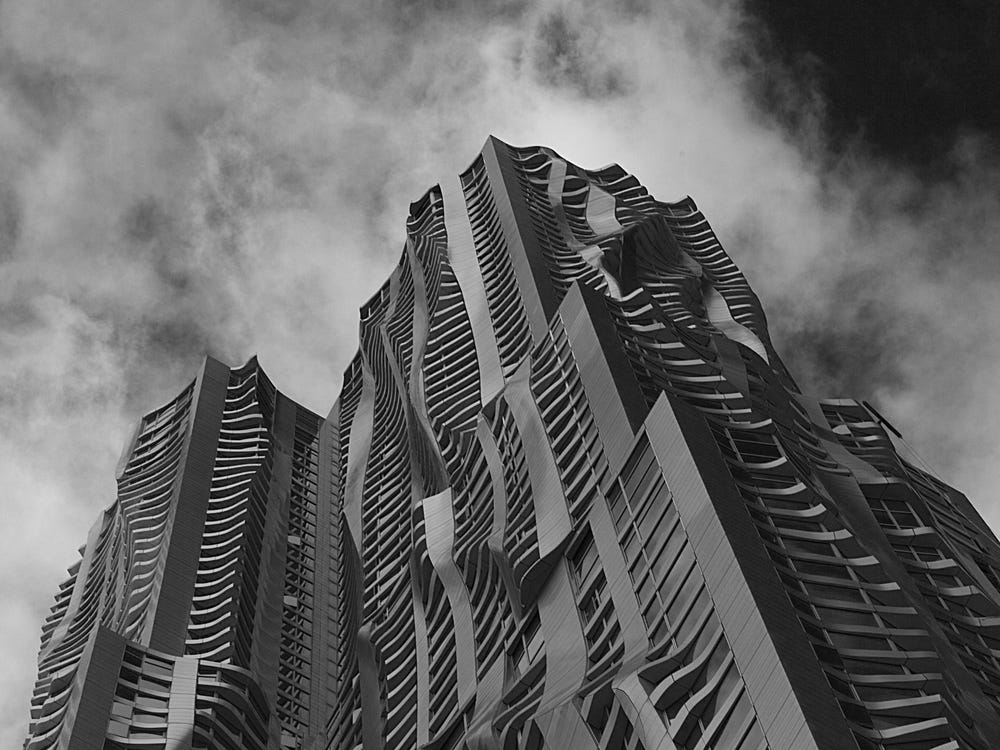 Photo Credit: 8 Spruce Street
Photo Credit: 8 Spruce Street
You know you’ve made it when you’re invited to star on The Simpsons. Such is the renown of Frank Gehry, the Canadian American visionary who’s spent his career tearing up the architectural rulebook. Prague’s Dancing House, the Walt Disney Concert Hall, and Barcelona’s piscatorial Olympic Fish Pavilion adorn Gehry’s resume, but here, we focus on three of his residential legacies.
8 Spruce Street, New York City
Anyone who’s been to New York City will have been awed by 8 Spruce Street (originally the Beekman Tower). At a majestic 870 feet tall, this double-barreled, crinkled steel tower became the tallest in the Western Hemisphere when it first opened, and though that honor no longer stands, 8 Spruce Street continues to steal the limelight in its part of town. The metallic skin has a fluid quality as if it’s been draped or poured over the core. Dezeen notes the ingenious way in which this unusual facade reflects the shifting light, transforming the exterior’s appearance from morning to noon to night. For residents of the 904 luxury units inside, the rippling effect also creates grand bay windows. Gehry was keen to “resurrect” this feature, which conjures up “the idea of flying, of being suspended over the void.” No wonder The New Yorker hailed 8 Spruce Street as “one of the most beautiful towers downtown.”
Prospect Place, London
Showing he can spar with the best of them, Gehry’s Prospect Place is a direct neighbor of Giles Gilbert Scott’s iconic Battersea Power Station in South London—perhaps even an extension of it. The sculptural, crisp white facades of the graceful condos in Gehry’s two buildings form a stylish iceberg that looks like it could have been cleft in two by Scott’s steaming four-chimneyed behemoth. The 308-unit Prospect Place encompasses everything from studios to penthouses, many boasting floor-to-ceiling glass with Thames views. Said Gehry of the project, “Our goal from the start has been to create a neighborhood that connects into the historic fabric of the city of London but also has its own identity and integrity.” Delightfully London-centric touches include access to a residential garden—mirroring the traditional private garden squares of the city’s Georgian townhouses.
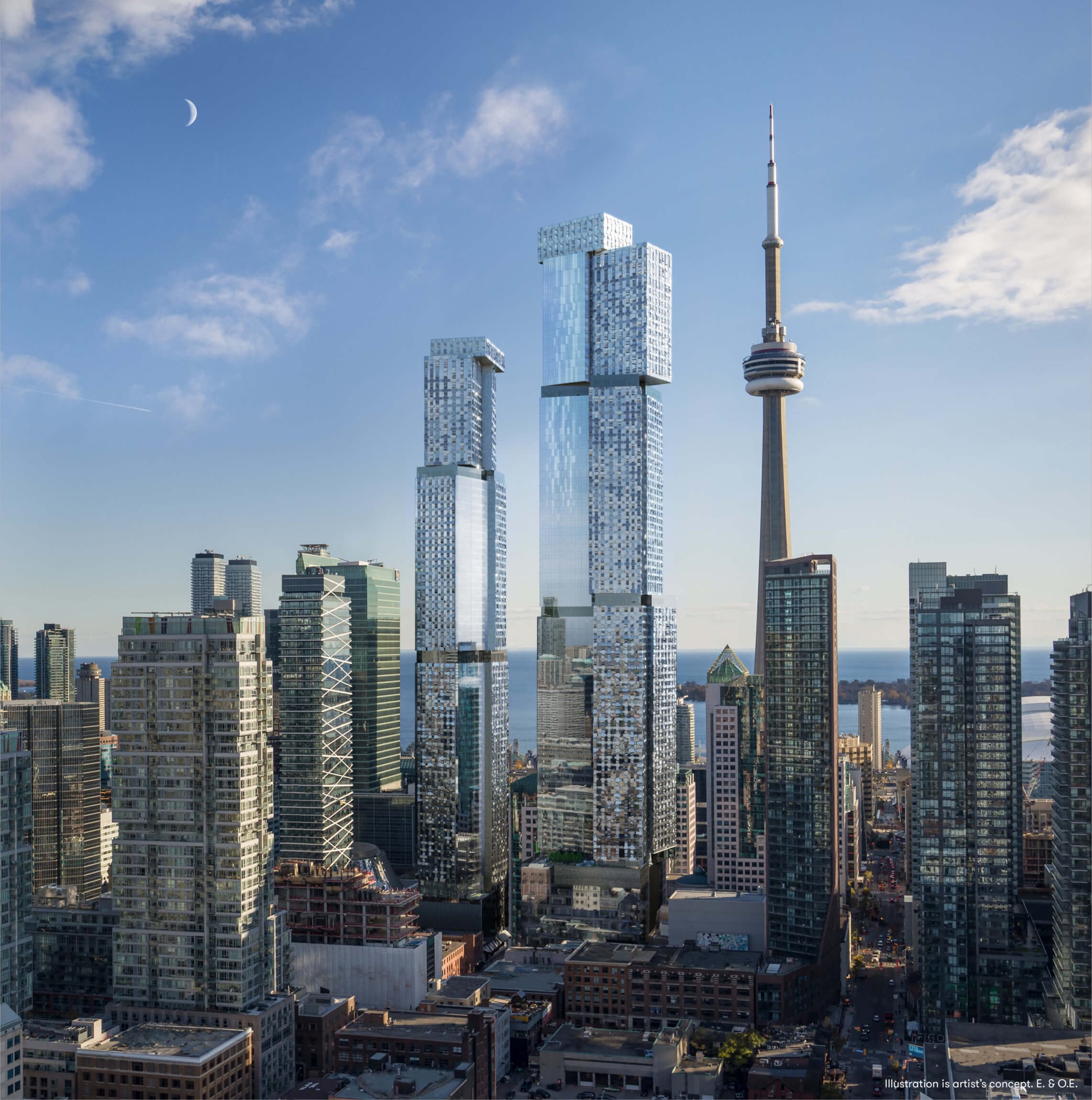 Photo Credit: Forma Toronto
Photo Credit: Forma Toronto
Forma, Toronto
Gehry returned to his Toronto hometown to mastermind Forma and pulled out all the stops for what was the first new development he designed in his native Canada. The architect explained how he wanted to inject the feeling of Toronto that he had as a kid into the very DNA of the building. In the two towers’ form, you may recognize whispers of Osgoode Hall, University Avenue, and the Parliament Buildings. But then there’s that inimitable Gehry touch; as with so many of his works, Forma gives the illusion of movement—the stacked vertical volumes taking part in a shimmering steel-and-glass game of Tetris on the city skyscape. As with 8 Spruce Street, the twists and turns in Forma’s architecture are anything but arbitrary; in fact, they’re tweaked to react with the city’s own special light. While The Simpsons may have jokingly skewered Gehry’s “haphazard” design process, in truth there is eloquent method behind every inch of his creations.


